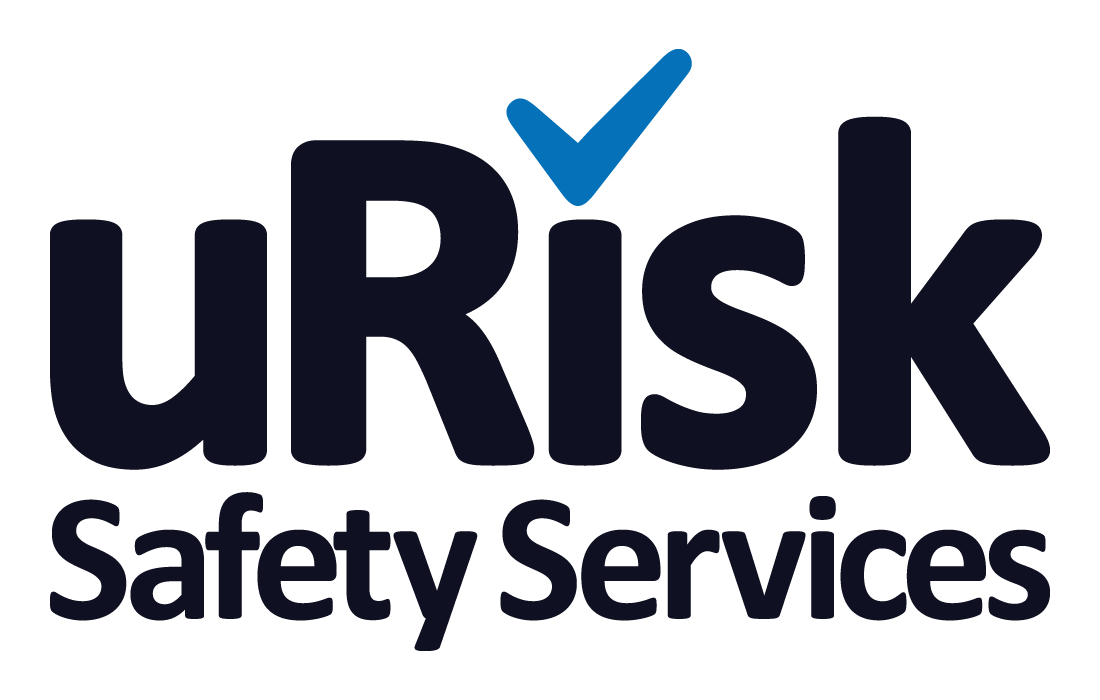Legionella & Water Monitoring
By law you must take suitable precautions to prevent, manage, and control the risk of exposure to legionella to meet the following regulations. Failure to address these issues not only put your employees and the public at risk but could leave you liable for enforcement action by the HSE Legionella Control Association/ Local Authority Environmental Health Department.
What are your legal requirements?
Duties under The Health & Safety at Work Act 1974 (HSWA) extend to risks from Legionella arising from work activities. In addition, harmful micro-organisms (biological agents) are subject to the Control of Substances Hazardous to Health Regulations 2002 and Amendment 2003 and 2004 (COSHH) and management responsibilities – The Management of Health and Safety at Work Regulations 1999 (MHSWR). A full list of the hierarchy of legal, guidance and British Standard documents are outlined below:
- The Health and Safety at Work Act (HSAWA)
- The Management of Health and Safety at Work Regulations (MHSWR)
- The Control of Substances Hazardous to Health Regulations (COSHH)
- The Notification of Cooling Towers and Evaporative Condensers Regulations
- ACoP and Guidance L8
- HSG 274 Technical Guidance Part 1-3
- BS 8580-1 Design, Installation, Testing and Maintenance of Services Supplying Water
- HTM 04-01 Safe Water in Healthcare
- HTM 01-05 Decontamination in Primary Care Dental Practices
- HSG 220 Care Homes
- HSG 282 Spa Pools
- BS 7592 Sampling for Legionella Bacteria in Water Systems
For more information on your requirements as listed above visit our support page.
How do I meet Legionella Compliance?
Legionella Risk Assessment
The first step in meeting Legionella compliance is to undertake a legionella risk assessment that will identify the potential risks Legionella posed by your water systems.
Legionella Remedial Works
Once these risks have been identified they should be removed, substituted or managed. This means undertaking any remedial works to reduce the risks identified.
Legionella Monitoring
Finally, you will need to control and manage the ongoing risk of Legionella exposure from your water system to employees and visitors by carrying out continued Legionella monitoring.
Monitoring Water Quality to Meet HSE Guidelines
Below is a full list of the many ways Legionella can be monitored, depending on your water system, you may need several to meet HSE’s Legionella Compliance.
Weekly Flushing
Quarterly Return Loop
Six Monthly Filter Servicing
Annual Tank Inspection
Annual TMV Servicing
Annual Water Testing
Monthly Temperatures
Quarterly Legionella Filters
Six Monthly UV Light Service
Annual Cylinder Inspection
Annual Representative Temp
Other Risk Systems
Quarterly Descaling
Six Monthly EV Flushing
Annual Review
Annual CWH Inspection
Annual Water Softener Service
Why Do I Need Water Monitoring?
Under the Health and Safety at Work Act 1974 and in compliance with the Approved Code of Practice (ACoP L8, HSG 274), duty holders, including employers and those in control of premises, must ensure the health and safety of their employees or others who may be affected by their undertaking. By understanding, monitoring data and managing water quality parameters, with regular water samples we can guarantee the purity and safety of our water systems, contributing to healthier environments and communities.
This includes taking suitable precautions to prevent, manage and control the risk of exposure to legionella and legionnaires disease. You can do this by undertaking the following control measures: a legionella risk assessment, actioning all identified legionella risks within the simple risk assessment with legionella remedial works, sampling the water quality to confirm bacterial presence with legionella testing, and carrying out ongoing record-keeping also known as legionella monitoring or water quality monitoring.
Take our online legionella training course for a better understanding of the compliance needed.
When & How Often Do I Need Legionella Monitoring?
Following a legionella risk assessment, a water logbook should be produced to aid with your legionella monitoring and record keeping. Each water system is different and therefore will require a bespoke water quality monitoring plan to control legionella levels and any potential exposure to legionnaires disease. Typically tasks should be undertaken weekly, monthly, quarterly, six-monthly and annually.
How Much Does Water Monitoring Cost?
Water quality monitoring prices vary depending on the number of water outlets, cold water storage tanks, hot water cylinders, combi boilers and other water assets that may be present. The number of assets within your water system will determine the time spent on-site and how long it will take to carry out all legionella monitoring tasks.
So how much does water quality monitoring cost? Across the industry, prices vary enormously often depending on the size of the company you use and their processes, speed of work and professionalism.
uRisk carries out price comparisons and reviews regularly to ensure our prices are kept competitive and with the customer in mind.
How Long Does a Water Quality Monitoring Visit Take?
Depending on the type of water quality monitoring visit it is and the size of the water system will determine how long a water hygiene engineer is on-site. For monthly temperature monitoring, you can expect the engineer to be on-site for a period of 30-60 minutes on average. However, if the tasks are quarterly de-scaling you might expect the engineer to be present for 1-4 hours.
Other tasks such as TMV servicing and inspections can take considerably longer due to the nature of the works.
How Long are Water Quality Monitoring Contracts?
Legionella monitoring contracts at uRisk range from 2 to 5 years. In special circumstances we offer 12-month contracts, but the longer the contract the better price we can offer you.
What if I Choose Not to do Legionella Monitoring?
It is your legal responsibility under HSE ACOP L8 (HSG 274) to ensure the safety of those at your place of work or property. Should you choose not to undertake water monitoring, you run the risk of allowing harmful bacteria to grow within your water system which may lead to illness and prosecution.
Service Process
Get a Quote
Get a quote today by phone, email, or complete our contact form to receive a quotation within 24 hours.
Booking
Our coordinator will be in touch to confirm a Date That Suits You, along with estimated time of arrival.
Your Appointment
On the day of your appointment, you will receive a 30 min Curtesy Call from an engineer to confirm they're on route.
Report
Your report is then Quality Checked and emailed in PDF Format, with Next Day Delivery.
Support Call
Our support team will be in touch to arrange your free 30 min Support Call to help explain your report.
All payments are due prior to booking completion unless agreed in writing for 30 days from the date of invoice. We will hold your booking time for 24 hours whilst we await payment. Reports are typically next day delivery, but please allow for up to 5 working days delivery.
Your Dedicated Safety Team

Jack
Customer Service

Neil
Operations

Matthew
Support

Shaun
Technical
Legionella Control and Management Tasks Explained
Weekly Flushing
Most taps are used weekly if not daily, which helps to keep water moving to make it difficult for bacteria to settle and grow. However, in commercial settings, many outlets are seldom used if at all. Examples might include office showers, school changing room showers, accessible toilets, and bib taps. Stagnation is arguably the number 1 cause for legionella proliferation, and therefore plays a vital role in your legionella control and management.
All infrequently used outlets should be flushed every 7 days (or twice weekly in healthcare) to ensure water does not stagnate and encourage legionella growth. Outlets should be flushed until a stable and compliant temperature is reached.
Knowing what outlets are infrequently used – there are 2 good indicators to tell us what outlets need to be added to the weekly flushing regime. Number 1 – you know you do not use the outlet. If it’s rarely used or an unoccupied area, it should be put onto the weekly flushing regime. Number 2 – non-compliant temperatures. If your outlet is not reaching the desired temperature range within the allowed timeframe when most other outlets do, this indicates that the outlet may be infrequently used and should be placed onto the weekly flushing regime.
Monthly Temperatures
Temperature plays an important role in legionella bacteria control and management as the legionella bacteria can proliferate between 20-50°C and has even been known to grow at 54°C, with legionella’s most favoured temperature being 37°C (body temperature) which is why it can be dangerous to humans once contracted causing illness such as legionnaires disease, pneumonia, Pontiac fever, and the common cold and flu. In many ways monitoring data to ensure you fall into these water quality parameters is one of the best ways to ensure your water systems meet regulations.
Temperatures must be reached within a specific timeframe. This allows us to ensure temperature testing remains consistent and allows us to determine the frequency of use of the outlet and potential areas of stagnation or risk.
Temperatures are required to be taken from all heat sources and the sentinel points of a water system. Sentinel points are the monthly temperature points at the nearest and furthest outlets of each water system. For example, taking the sentinel points from a cold-water storage tank would consist of taking the temperature from the nearest tap to the tank and the furthest away. For heat sources, this means taking the temperatures nearest and furthest from all heat sources. This may be a cylinder, electric water heater, boiler or otherwise. However, in the case of an instant water heater with a single outlet such as a shower, the outlet becomes the nearest and furthest so one temperature would be all that can be taken.
Temperature timeframes
Hot temperature – 1 minute
Cold temperature – 2 minutes
Temperature guidelines
Hot outlet – 50°C (55°C in healthcare)
Cold outlet – <20°C
TMV* outlet – 38-43°C (ranges vary for showers/baths)
Scalding – 44°C
Heat sources
Cylinder and flow – 60-65°C
Cylinder return – 50°C (55°C in healthcare)
Combination water heater – 60-65°C
Boiler – 50-60°C (55°C minimum in healthcare)
Electric water heater – 50-60°C (55°C minimum in healthcare)
Instant water heater – 50-60°C (55°C minimum in healthcare)
*TMV – thermostatic mixing valve, blends hot and cold to create a reduced, non-scalding temperature. Often required for vulnerable persons and in healthcare.
Quarterly Descaling
Limescale is a great source of nutrients for legionella. Limescale can be found anywhere in water systems where there is hard water. The UK suffers from hard water due to the chalk limestone earth below the ground that finds its way into our reservoirs that supplies our mains water. Therefore, all outlets should be dismantled, cleaned, and descaled to remove the presence of limescale. This includes taps, spray heads, tank cleaning, showerheads and hoses.
Quarterly Re-Circulating Return Loop
Taking the temperature from the re-circulating return loop quarterly for subordinate temperatures.
Quarterly POU Legionella Filters
POU legionella filters should be replaced quarterly to ensure they are in working order.
Six Monthly Expansion Vessel Flushing
An expansion vessel is a small white, blue, grey, or red tank. The white, blue, and grey vessel colours are to identify water system expansion vessels and the red is to identify heating system expansion vessels. Each vessel includes a rubber diaphragm that goes across the middle, where the bottom half of the vessel is filled with water and the top half with pressurised air. When water is heated at the heat source (like a cylinder) it may expand as much as 4%. The expansion vessel allows this expanded water (increase in water size) from the heat source (cylinder) to flow into the expansion vessel where the bottom half of the vessel (water) may push the diaphragm up into the top hair (airside) to allow for the expansion in water.
So why do we need to flush an expansion vessel? Well, there are 2 primary reasons. One the expansion vessel is a dead end, and as such does not allow water out of it and therefore encourages stagnation both inside the vessel and all the pipework leading to it from the feeding tee (branch of pipe that leads to it). Secondly, the diaphragm is made of rubber, which is a great source of nutrients for legionella.
The guidelines outline that we must flush the expansion vessel for six months to remove stagnant water from the vessel and relevant pipework.
Six Monthly Filter Servicing
A filter’s job is to cleanse the water impurities and allow for good quality water to pass by and therefore provide us with good quality water free from bacteria and the like. And in doing so the filter will become dirty itself. You will often see an internal filter that initially looks like a clear white tube that eventually turns brown/black with impurities over time.
Most manufacturers have given this timeframe of 6 months before a water systems filter needs to be replaced or cleaned.
Six Monthly Ultraviolet Light Service
Ultraviolet lights should be serviced routinely to ensure they are kept in working order.
Annual Review
An annual review is an important part of checking your water quality parameters for legionella testing and control. At this stage, your risk assessments, logbook, schematic, and other records will be reviewed by an engineer to confirm the status of your legionella control and management. This will ensure that you have all the technical guidance required to meet regulations as well as monitor the level of dissolved oxygen in your system.
Annual Cold Water Storage Tank Inspection
Coldwater storage tanks overall as a design will not change from year to year but the condition of the tank internally certainly can. Coldwater storage tanks are subject to poor temperatures (too hot or freeze), foreign bodies (bugs, animals), sediment (from mains), biofilm (from stagnation), wall spores (bacteria), and so on. Therefore, it is important to undergo both the internal and external water quality monitoring and tank conditions annually, as a minimum.
Annual Cylinder Inspection
Hot water cylinders are subject to continual heat changes that may increase the risk of legionella through non-compliant temperatures. They also require temperature gauges, pipe insulation, and should be purged periodically to remove any internal limescale, debris, or sediment. Cylinders are prone to limescale build-up and an inspection and drain down (purge) of the cylinder will help to remove unwanted items within the cylinder and ensure high water quality.
Annual Combination Water Heater Inspection
A combination water heater consists of a cold-water storage tank on top feeding the hot water cylinder below, hence the name combination water heater. Therefore, both the tank and cylinder inspections and servicing must take place on a combination water heater.
Annual TMV Servicing
TMV or thermostatic mixing valves are blending valves that mix the hot and cold water to reduce the risk of scalding where temperatures are often set to 41°C, 3°C lower than the scalding starting temperature for vulnerable persons at 44°C.
TMVs are fitted with filters that protect the valve, where these filters are prone to blocking with limescale, sediment, and other matter. Therefore, a TMV should be serviced at least annually as recommended by most manufacturers. TMV servicing, is one essential water quality monitoring step that should not be missed, it will often include temperature calibration, failsafe testing, and cleaning and disinfection of TMV parts amongst other actions where required.
Annual Representative Temperatures
Whilst you are required to undertake monthly temperature monitoring throughout the year at your sentinel points. You are also required to take the representative temperature at other points in the system to gather information on the rest of the water system. This could be made up of 10% of outlets in the system from areas you do not normally take the temperature from when undertaking monthly temperatures.
Annual Water Softener Servicing
Manufacturers recommend that water softeners should be serviced annually to check levels of dissolved oxygen and provide technical guidance. This often includes a regeneration process where backflow is created to remove any bacteria or otherwise within the water softener system. Additionally, a review of the brine (salt) tank and other elements will be reviewed to ensure a safe and suitable working condition.
Annual Water Testing/ Legionella Sampling
It is recommended that legionella sampling or a legionella risk assessment is undertaken periodically or at least annually, in order to ensure you receive all the technical guidance required to meet regulations. The number of water samples required will depend entirely on your water system. For example, samples should be taken from dead legs or areas of stagnation, cold water storage tanks, and all sentinel points to provide an accurate overview of your water quality parameters and the water system’s condition.
Annual Water Testing/ Legionella Sampling
Water quality monitoring plays a crucial role in safeguarding our environment and ensuring the quality and safety of our water systems. There are many ways to conduct water quality monitoring, and one of the most essential aspects involves collecting and analyzing monitoring data, often through the collection of water samples. These water samples help experts assess various water quality parameters, including dissolved oxygen levels, a key indicator of aquatic health. By meticulously examining water quality parameters, we gain insights into the overall health of our water systems, ensuring they meet the highest standards for water quality and safety. There is a range of other risk systems that require more bespoke management. For more information please contact our team. Below we have a list of water systems that commonly require regular legionella risk assessments:
- Ultrasonic humidifiers/ foggers
- Spray humidifiers
- Air washers
- Emergency showers
- Sprinkler and hose systems
- Swimming pools/ whirlpools/ jacuzzis
- Horticultural misting systems
- Dental chair
- Vehicle wash systems
- Fountains and water features
- Industrial processing water systems
- Reverse osmosis
- Water dispensers
- Evaporative cooling systems
- More
What are the most common Water Monitoring Technologies?
Water monitoring is essential for the safety not only of our drinking water, but also our environment. Water monitoring technologies have been devised to help scientists and engineers gather accurate information in real time so they can monitor temperature, flow, sediments, dissolved solids, pollution, identify problems, changes in trends, and be alerted to any emergencies.
Methods of water quality monitoring
There are different ways of monitoring water in order to collect water quality data, such as:
Sampling – Taking water samples from the environment or from water systems enables specialists to test the chemical condition of water at that given point. The water is then tested for different parameters such as dissolved oxygen, biological and chemical contaminants. In the past, the water samples had to be taken by hand which meant someone had to physically visit the site – a time consuming and sometimes difficult process when samples need to be taken from less accessible areas. The sample would then have been sent off for analysis in order to determine the water quality. More recently, sensor technology has been developed to aid remote, real-time water quality monitoring, saving resources and response time.
Remote cameras – Installing remote cameras allows you to visually monitor the water in real time. Changes in colour, blockages, damage and water levels are easy to assess at any given time without the need to travel to the location.
Smart sensors – The development of the Internet of Things (IoT) has enabled low-cost remote monitoring solutions that are being developed all the time. This has encouraged the mass development of systems, using improvements in battery development, solar power and telecommunications to improve monitoring for businesses and environmental groups alike.
Remote water temperature monitoring
When it comes to legionella risk management, remote water temperature monitoring is vital. Part of your business’s health and safety requirements when it comes to managing the risks of legionella bacteria is dependent on the temperature of your water. With the use of remote temperature readers installed throughout your water system and constantly monitoring your water, you can reduce the likelihood of accidentally creating the conditions in which legionella bacteria breed.
Why is the water temperature so important?
Legionella bacteria thrive in water temperatures that are between 20-45°C. It is therefore necessary to ensure that, in order to protect the people who use the building, your water is kept at temperatures that are hostile to the bacteria to stop them becoming established. Your cold water system must therefore be kept below 20°C, the temperature it stops multiplying and goes into a dormant state. Your hot water system must be stored at a temperature in excess of 50°C which is the minimum temperature needed to start killing the bacteria. It’s important to bear in mind that the hotter the water temperature, the more effective it is – after two hours at 50°C, 90% of the bacteria will have been killed off. If you heat your water to 60°C, you’ll kill 90% of the bacteria in just two minutes. If your water is 70°C or higher, all the legionella bacteria present will die instantly.
Legionella Thermometer Remote Water Monitoring
Our remote water temperature monitoring service is designed to help you keep your water systems safe. We will install sensors in your hot and cold water systems that will collect data and send it to your server. This means users can monitor your water in real time without the need to do physical temperature checks, saving your company a lot of time, especially if you have multiple sites. Contact us to find out more.
Why choose uRisk?
Over 25 years of water hygiene and legionella control experience.
Friendly and simple advice by phone, email & online at your convenience.
All staff are trained water hygiene consultants and engineers.
With engineers located all across the UK, we're never too far away.
Our labs are UKAS approved providing you with quality assurance.
Your one stop shop for Legionella control, no need to go elsewhere.










